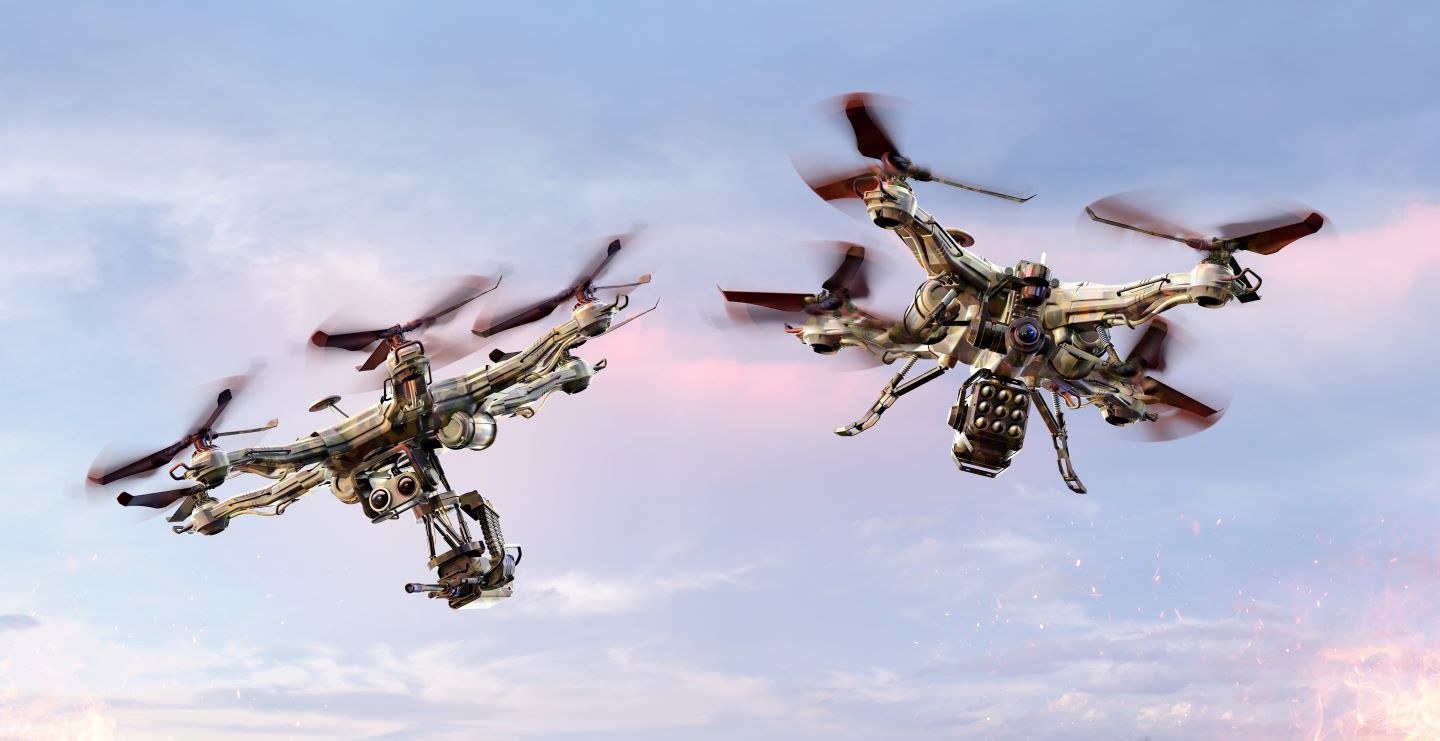Following two years of conflict, one of the major impacts of Russia’s invasion of Ukraine has been the evolution of counter-drone technologies. While drones have not revolutionised warfare, their increased use in conflict has forced military leaders to consider the best ways to deal with high quantities of cheaply made drones that can destroy expensive equipment and take lives. Much focus has been given to the role of drones in Russia’s war, but both sides have also employed several technologies to limit the effectiveness of drones on the battlefield.
A central problem for military leaders has been the struggle to destroy inexpensive and abundantly produced drones with technologies that are also cheap to produce with a low cost per shot or use. Ukraine’s impressive destruction of much of Russia’s Black Sea Fleet, often through the use of unmanned surface vehicles (USV), has come at great cost to the Russian military. For example, Ukraine recently used domestically produced Magura V5 drones to destroy the Sergey Kotov, a patrol ship valued at around $65m.
This type of loss is unsustainable and demands ways to successfully counter USV systems. To counter losses such as this, military leaders seek emerging technologies that use some combination of detection, tracking, and interdiction to stop oncoming drones. Interdiction methods include both passive and active techniques to counter oncoming threats. Passive techniques include jamming and cyberwarfare (hacking) to disable drones while active techniques use a variety of projectiles such as directed energy weapons, nets, and more conventional munitions to destroy drones.
Critically, there is no one-size-fits-all solution to tackling drones; each technology and method of interdiction has specific circumstances and targets for which it is the most useful system. For example, while Diehl Defence’s accurate but costly IRIS-T missile would not be effective against a swarm of small drones, electronic warfare (EW) systems such as the Ukrainian Brave1 can jam oncoming UAS. Following Russia’s 2014 invasion of Crimea, the Bukovel EW jamming system was deemed so valuable that Ukraine further developed and deployed EW systems like the Brave1 after the 2022 invasion. Reflecting more on the IRIS-T, while not an anti-swarm system, it has certainly made its mark by defending Ukraine against Russian cruise missiles.
Another platform, the L3Harris Vehicle-Agnostic Modular Palletized ISR Rocket Equipment (VAMPIRE), is a laser-guided missile launcher that is installed a truck bed that has been critical to countering Russian drone strikes in Kyiv and elsewhere. These missiles are used to destroy oncoming Iranian-produced Shahed drones, and their high rate of interception has protected countless Ukrainians during Russian night raids.
See Also:
As drones develop new abilities and improve current ones, defence contractors and strategic thinkers will be required to invest in counter-drone technologies. This oncoming investment means the markets for both drones and C-UAS will expand rapidly in the coming years as those on the battlefield demand solutions to the age of the drone.
How well do you really know your competitors?
Access the most comprehensive Company Profiles on the market, powered by GlobalData. Save hours of research. Gain competitive edge.

Thank you!
Your download email will arrive shortly
Not ready to buy yet? Download a free sample
We are confident about the unique quality of our Company Profiles. However, we want you to make the most beneficial decision for your business, so we offer a free sample that you can download by submitting the below form
By GlobalData









Related Company Profiles
L3Harris Technologies Inc